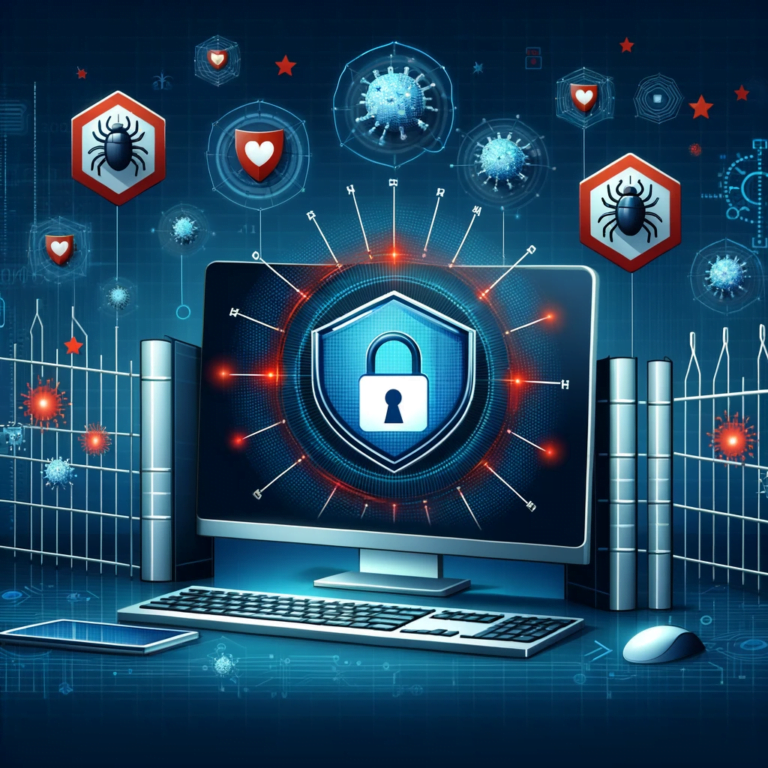The Importance of Cybersecurity
In today’s digital age, cybersecurity has become a critical concern for individuals, businesses, and governments alike. With the ever-increasing dependence on technology, the risk of cyber threats and attacks is also on the rise. As technology advances, so do the techniques and tools used by cybercriminals. It is crucial to stay ahead of these threats and be aware of the emerging cybersecurity trends that will shape the landscape in 2024.
1. Artificial Intelligence and Machine Learning
Artificial Intelligence (AI) and Machine Learning (ML) are revolutionizing the cybersecurity industry. In 2024, AI and ML will play an even more significant role in detecting and preventing cyber threats. These technologies can analyze vast amounts of data, identify patterns, and detect anomalies in real-time, enabling faster response to potential attacks. AI-powered cybersecurity systems can also learn from past incidents and adapt to new threats, making them more effective in protecting sensitive information.
2. Zero Trust Architecture
Zero Trust Architecture is an approach to cybersecurity that assumes no entity, whether inside or outside the network, should be trusted by default. In 2024, we can expect to see a widespread adoption of this security model. Zero Trust Architecture focuses on verifying every user and device before granting access to resources, regardless of their location. This approach minimizes the risk of unauthorized access and limits the potential damage caused by compromised credentials or insider threats.
3. Cloud Security
As organizations increasingly move their data and applications to the cloud, ensuring the security of cloud environments becomes paramount. In 2024, cloud security will continue to evolve to address emerging threats and vulnerabilities. This includes enhanced encryption methods, improved access controls, and more robust security monitoring and incident response capabilities. Cloud service providers will also invest more in securing their infrastructure and offering advanced security features to their customers.
4. Internet of Things (IoT) Security
The proliferation of IoT devices brings new challenges to the cybersecurity landscape. By 2024, it is estimated that there will be over 41 billion connected IoT devices worldwide. These devices, ranging from smart home appliances to industrial control systems, present attractive targets for cybercriminals. IoT security will focus on securing the entire ecosystem, from device hardware and firmware to communication protocols and cloud platforms. Strong authentication, encryption, and regular software updates will be crucial in mitigating IoT-related risks.
5. Biometric Authentication
Passwords are no longer considered secure enough to protect sensitive information. In 2024, we can expect to see an increased adoption of biometric authentication methods, such as fingerprint scanning, facial recognition, and iris scanning. Biometrics provide a more reliable and convenient way to verify a user’s identity, making it harder for cybercriminals to impersonate individuals. However, it is essential to address privacy concerns and ensure that biometric data is securely stored and processed.
6. Cybersecurity Workforce Development
The demand for skilled cybersecurity professionals continues to outpace supply. In 2024, organizations will invest more in workforce development programs to bridge the skills gap. This includes providing training and certifications to existing employees, partnering with educational institutions to develop cybersecurity curricula, and promoting diversity and inclusion in the cybersecurity field. Building a strong and diverse cybersecurity workforce is crucial to effectively combatting cyber threats.
Conclusion
As we look ahead to 2024, the cybersecurity landscape will continue to evolve and adapt to emerging threats. Artificial Intelligence, Zero Trust Architecture, Cloud Security, IoT Security, Biometric Authentication, and Workforce Development will be the key trends shaping the industry. It is essential for individuals and organizations to stay informed about these trends and take proactive measures to protect themselves from cyber threats. By embracing these trends and investing in robust cybersecurity measures, we can create a safer digital environment for all.










